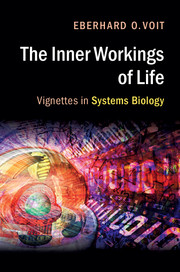Book contents
- Frontmatter
- Contents
- Appetizer
- Acknowledgments
- 1 Status: it's complicated!
- 2 I'd rather be fishin’
- 3 Whizzes and apparitions
- 4 Why?
- 5 Simply engenious!
- 6 Just a little bit
- 7 Supermodels
- 8 Close only counts in horseshoes and hand grenades
- 9 Emergence preparedness
- 10 Life without chaos?
- 11 What hath God wrought!
- 12 Tell me with whom you go and I'll tell you who you are
- 13 Time for a change!
- 14 Can't we all get along?
- 15 Love thyself and fight all others
- 16 A billion dollars for your thoughts!
- 17 The computer will see you now…
- 18 Redesigning perfect
- 19 Let's meet in the agorá!
- 20 Dessert
- Gentle jargon
- Selected further reading
- Index
2 - I'd rather be fishin’
Published online by Cambridge University Press: 05 May 2016
- Frontmatter
- Contents
- Appetizer
- Acknowledgments
- 1 Status: it's complicated!
- 2 I'd rather be fishin’
- 3 Whizzes and apparitions
- 4 Why?
- 5 Simply engenious!
- 6 Just a little bit
- 7 Supermodels
- 8 Close only counts in horseshoes and hand grenades
- 9 Emergence preparedness
- 10 Life without chaos?
- 11 What hath God wrought!
- 12 Tell me with whom you go and I'll tell you who you are
- 13 Time for a change!
- 14 Can't we all get along?
- 15 Love thyself and fight all others
- 16 A billion dollars for your thoughts!
- 17 The computer will see you now…
- 18 Redesigning perfect
- 19 Let's meet in the agorá!
- 20 Dessert
- Gentle jargon
- Selected further reading
- Index
Summary
Biological research has had a long and esteemed history. So it is not surprising that its concepts, approaches, and methods have been subjected to dramatic changes time and again. Early trial and error in agriculture and animal domestication matured into simple plant manipulations and animal husbandry. Observations of birth and death, growth and decay, led to methods for preserving food for times of dearth. Exploratory dissections of corpses turned into primitive forms of surgery. The worldview of biology exploded with the invention of the microscope, which opened a window into an entirely new world of cells and microorganisms and pathogens. The exploration of medicinal herbs and poisons, as well as the procedures of alchemy and chemistry, motivated the invention of ever-more accurate methods and refined measurement tools.
The search for scientific truth reached a high point in the seventeenth century with the acceptance of the so-called scientific method, which is still considered fundamental today. According to this method, scientific inquiry advances through well-structured, iterative cycles of posing a hypothesis, testing it with experiments, analyzing results, making predictions, testing them, and formulating new hypotheses. In all fairness, one should mention that the roots of this structured type of scientific thinking and experimentation can actually be traced back two millennia to the third century bc Greek physician and anatomist Herophilus, who cofounded the most famous medical school of the time in the Egyptian city of Alexandria. Herophilus performed systematic dissections, which he documented in great detail, and maintained that trustworthy scientific knowledge can only be found on an empirical basis. Nevertheless, the scientific method became the gold standard only in the seventeenth century.
Then the twentieth century rolled along and modern biomedical research exploded. Powerful experimental tools and custom-tailored machines rendered it possible to characterize biological phenomena with a resolution never seen before, down to the level of individual molecules. A prominent highlight was the identification of the structure of DNA, but many other classes of molecule were identified and characterized, and uncounted small and large discoveries occurred during the second half of the century. Most of these breakthroughs resulted directly from the application of the scientific method, which brought forth incredible amounts of precise data and unprecedented insights into the inner workings of life.
- Type
- Chapter
- Information
- The Inner Workings of LifeVignettes in Systems Biology, pp. 9 - 16Publisher: Cambridge University PressPrint publication year: 2016



